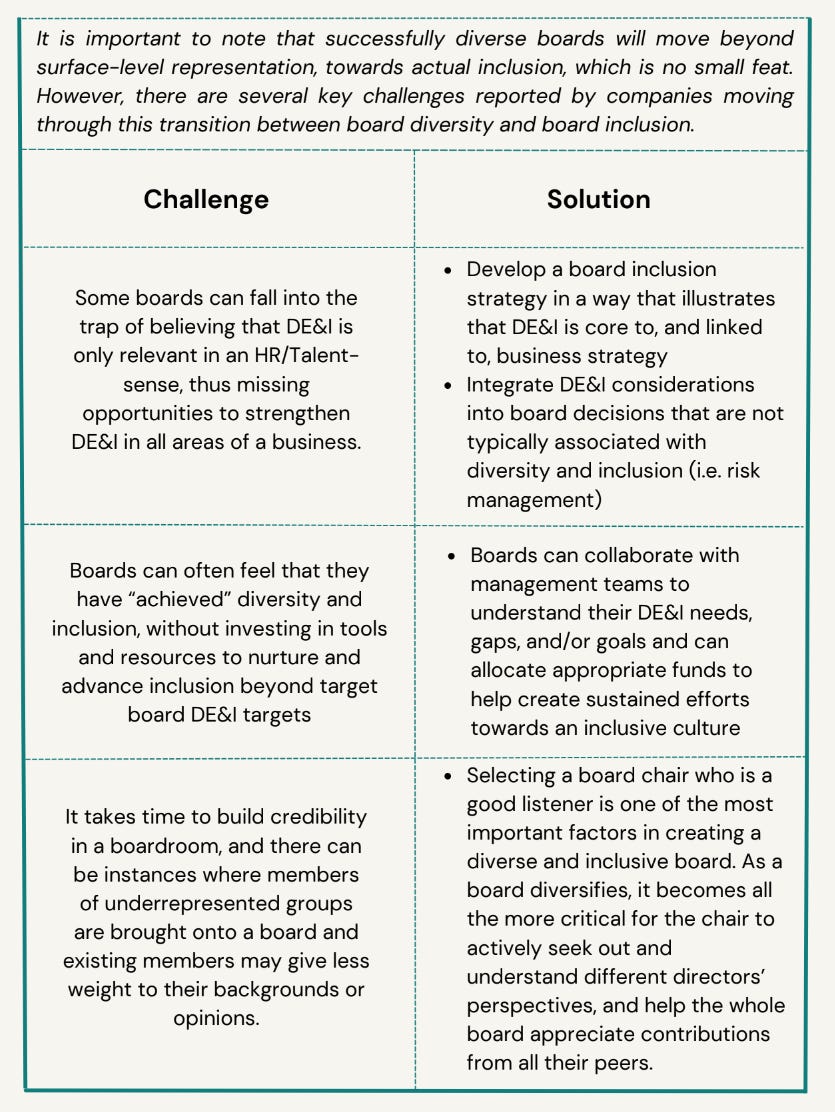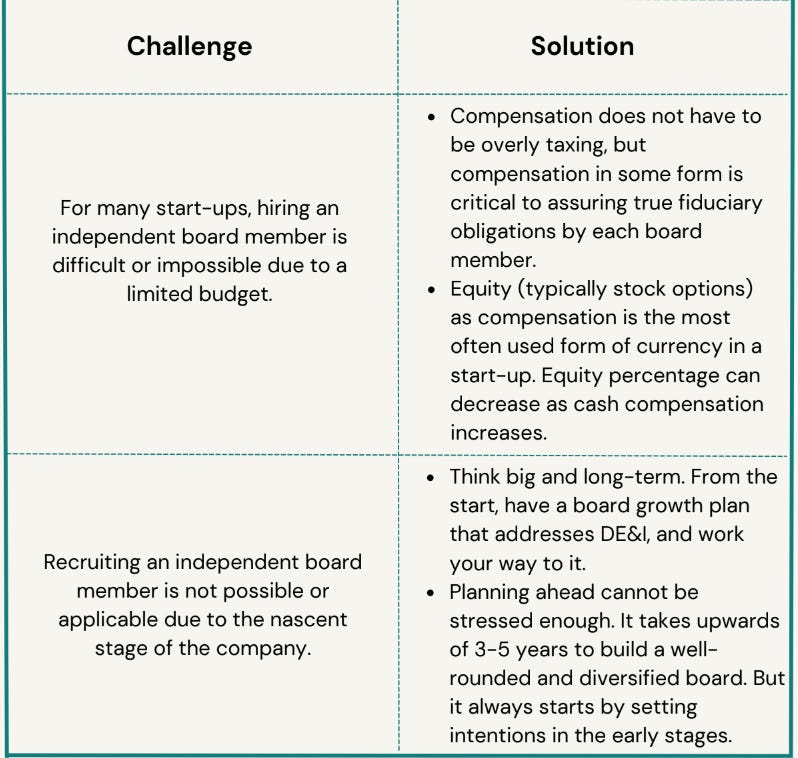How to diversify your board: Issue #33
Yep, your all white male board is a liability
by Unovis Impact Team
Board Diversity in the Venture Capital and Startup Sectors Today
There’s no denying that the current state of board diversity within the venture capital (VC) and startup sectors requires improvement. A report released by J.P. Morgan found that the percentage of startup board appointments that are women grew 9% from 2018 to 2021, to 22%. That number is only half the rate of public companies, which still isn’t a reflection of the population. Not surprisingly, there is also less racial and ethnic diversity on startup boards. Of the roughly 4,700 board seats at private companies funded by the top VC and private-equity firms that have gone public since 2000, only about 1% have been held by Black directors, according to the Board Diversity Action Alliance.
These board statistics reflect the composition of the VC world, which skews heavily white, male, and of a higher socioeconomic status. With low levels of diversity in VC firms, there is less urgency and focus on investing in companies that represent diverse perspectives and by extension, diversifying boards.
Source: Wooden Toy Shop
Why build diverse and inclusive boards?
Besides simply being the right thing to do, there are business cases for building more diverse and inclusive boards. A recent report found that the most diverse boards added 3.3% to return on invested capital compared to their less diverse peers. Diverse boards have also contributed to higher investment in R&D and an increased capacity for innovation, resulting in a more meaningful competitive advantage for their companies.
Greater diversity at the board level is powerful for attracting and retaining more diverse talent, which we know is a key tenant of company success. A 2015 study from McKinsey & Company found that companies in the top quartile for racial and ethnic diversity are 35% more likely to have financial returns above their respective national industry medians.
Aside from the impact that diverse boards can have on company profitability, they have also been shown to be more collaborative, measured, and united in their decision-making, as opposed to homogenous boards. Harvard Business Review found that boards with more women tended to take the time to reach a common understanding of problems when disagreement occurred, resulting in more unified decisions and less of an echo chamber.
Diversity can only have a positive impact on companies if team members are actually truly included.
So how do we shift the VC and startup world towards a more equitable dynamic? Here are ways to start:
Recommendations to Improve Board Diversity & Inclusion
That last bullet point is not something commonly discussed, but relevant for recruiting and employee development. Just as job seekers should make a list of their top organizations to work with, companies should keep an evolving list of people they’re interested in. Needs and circumstances change. Though a collaboration with your most inspiring candidates may not work today, there may be an opportunity next season. Similarly, internal staff who are deepening their knowledge and strengths can grow into someone who will benefit your board.
These last two bullet point actions are great employee practices, and improve meeting hygiene and efficiency. It’s easy to get stuck in ruts, so bringing team members fully up to speed, rotating responsibility, sharing deeply, and truly listening to fresh perspectives make for better team outcomes.
Effective Board Diversity Requires Board Inclusion
Diversity can only have a positive impact on companies if team members are actually truly included. Here are some ideas for fostering a culture of inclusion:
Again, listening (and actively hearing) different perspectives is key.
We’d like to stress this last item about tokenism. Don’t diversify because you’re supposed to, or to make your organization look good. First, understand why and how varied perspectives matter, and find people who share, and can contribute to, your company’s goals.
Startups face a unique set of board-related challenges
Much of the available guidance on building more diverse and inclusive boards is given to large, publicly-listed companies. While there are insights to garner from this perspective, it is also important to tailor for the small-scale startup level.
Startups will almost always have a Board of Directors that consists of some set of founders, key investors, and sometimes independent directors (members who don’t have a position at or material relationship with the company). Independent director seats are where a startup has the most control over diversifying its board since many of the other seats are more set in stone.
This is a lot of information! Here are the key takeaways for building effective, dynamic boards:
Leadership buy-in to create diverse & inclusive boards is essential.
No matter how small the founding team, set your diversity intention at the start.
Take action. Plan ahead regarding board expansion. Waiting until the last minute to recruit all but ensures the status quo. Meet your future partners now.
Boards that reflect society are good for business!
Get help from professionals.
You work on improving your company in some way every day. Build in diversity and inclusion planning now, and continue to evolve as you learn. Your business will gain strength as a result.
If you’re interested in researching further, here are some additional resources:
When and Why Diversity Improves Your Board’s Performance (Harvard Business Review)
Is Your Board Inclusive — or Just Diverse? (Harvard Business Review)
The Missing Element of Private Equity (Harvard Law School)
Board inclusion framework: Enabling boards to govern inclusively (Deloitte)
When It Comes to Board Diversity, Follow the Money (JP Morgan)
Why Diversity Matters (McKinsey & Company)
When and Why Diversity Improves Your Board’s Performance (HBR)
Recruiting for Board Diversity — Without Disrespecting People of Color (BoardSource)
Board payment options (Indeed)
Why Startups Should Diversify Their Boards Early (Forbes Finance Council)
Webinars
Recruitment Resources








